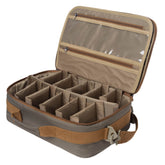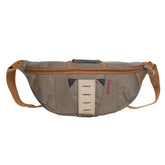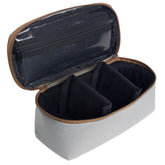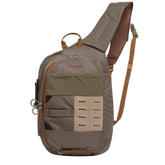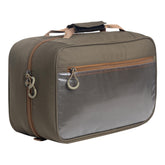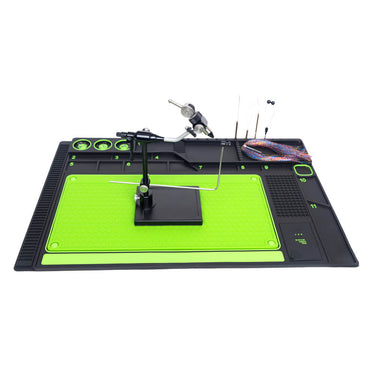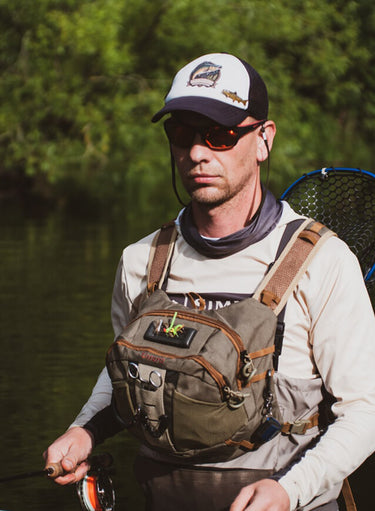Fly Line: Choosing the Right Backing Line for River Fishing Accuracy
Choosing the right fly fishing backing line is crucial for enhancing your fishing experience. The appropriate backing line not only supports your fly line but also plays a vital role in successful casts and retrieves, especially when targeting fish in rivers. My expertise has shown me that selecting the right combination of backing, fly line, and leader can significantly impact both the accuracy and effectiveness of your fishing strategy.

When fishing in rivers, the demands on your equipment are unique. I often find that a thicker backing line provides the necessary strength and durability to handle fast currents and larger fish. This choice allows me to cast with confidence, knowing that my line can withstand the challenges posed by varying conditions.
Casting accuracy also hinges on the right fly fishing backing line. A well-chosen backing not only maximizes your line's performance but also ensures that you have enough length to manage long-distance casts without losing control. Understanding this relationship allows me to refine my technique and increase my chances of success on the water.
Understanding Fly Fishing Lines
When selecting the right fly fishing line, it’s essential to consider the types available and the appropriate weight for your setup. Different lines serve specific purposes, enhancing your fishing experience based on location and technique.
Fly Line Basics and Types
Fly lines come in various types, primarily categorized as floating, sinking, and intermediate lines.
-
Floating Lines: Most commonly used in still water or during hatches. They allow for easy casting and control of the fly's placement on the water's surface.
-
Sinking Lines: Designed to pull your fly beneath the water's surface, these lines are ideal for deep-water fishing or targeting fish holding at various depths.
-
Weight Forward and Double Taper: Weight-forward lines have more mass at the front, aiding in casting distance and accuracy. Double taper lines provide versatility for delicate presentations.
Choosing a quality line from reputable manufacturers ensures durability and performance, which directly impacts your success on the water.
Choosing the Right Line Weight
The weight of the fly line should correspond to the rod weight for optimal performance. Most fly rods are rated for specific line weights, usually ranging from 2 to 12.
-
Match the Weight: Using a line that's too heavy or too light can hinder casting effectiveness.
-
Consider Fishing Conditions: For example, a 5-weight line may work for trout in a river, while a heavier line might be needed for larger species in saltwater.
Always check the specifications on your fly reel and rod to ensure compatibility. The right combination increases accuracy and enhances your overall fly fishing experience.
Fly Fishing Backing Line Essentials
When it comes to fly fishing, the backing line plays a critical role in enhancing performance and ensuring a successful catch. Proper understanding of its purpose and selection can make a significant difference in various fishing scenarios.
Purpose of Fly Line Backing
The backing line acts as a crucial support for the fly line on the reel. It provides extra line capacity, which is essential when battling larger fish that may take long runs. The backing allows for the fly line to be fully utilized without risking a break or losing a catch.
In addition to extra capacity, backing also helps cushion the line during strong pulls. This is particularly important with aggressive fish species. The combination of flexibility and strength in backing assists in preventing damage to the fly line and enhances overall control.
Selecting Backing Line for Different Fishing Scenarios
Choosing the right backing line involves understanding the specific requirements for different fishing environments. For river fishing, strong and durable backing is vital. I recommend using braided backing because of its high strength-to-diameter ratio, which maximizes spool capacity and minimizes line memory.
For casting accuracy, selecting a backing that matches your fly reel's specifications is key. A good rule of thumb is to use 20 to 30-pound test backing for freshwater applications. This ensures that the backing can withstand the stress of casting and the force exerted by fish during a fight.
Assess the type of fly fishing you’ll be doing—whether it’s for trout in freshwater or saltwater species—when choosing your backing line. Proper selection will enhance your success on the water.
Fly Line Rigging and Maintenance
Proper rigging and maintenance of your fly line enhance performance and extend its lifespan. Understanding how to attach components securely and care for them will improve your fishing experience.
Properly Attaching Fly Line to Backing and Leader
To begin, I use a strong connection method to attach the fly line to the backing. A commonly used knot is the double arbor knot. It ensures a secure grip on the reel. I pass the backing through the reel's arbor, then wrap it around and tie the knot, tightening it carefully.
Next, I attach the leader to the fly line using a loop-to-loop connection. This method allows for easy changes while maintaining strength. I tie a loop in the leader, then connect it to the line's loop, securing it with a simple knot. Regularly inspect these connections to avoid any failures during casting.
Caring for Your Fly Lines
Maintaining my fly lines is crucial for optimal performance. After each trip, I rinse the line with fresh water to remove dirt and debris. I use a soft cloth to wipe it down, which prevents buildup and wear.
I store my lines properly by coiling them loosely. This prevents kinks and twists that can affect casting. Using a fly line maintenance solution helps keep the coatings in good condition.
Periodically inspect for signs of wear or damage. I check for frays, and if I find any, I cut the compromised section and retie if necessary. These simple steps keep my gear in optimal working condition for each fly fishing outing.



